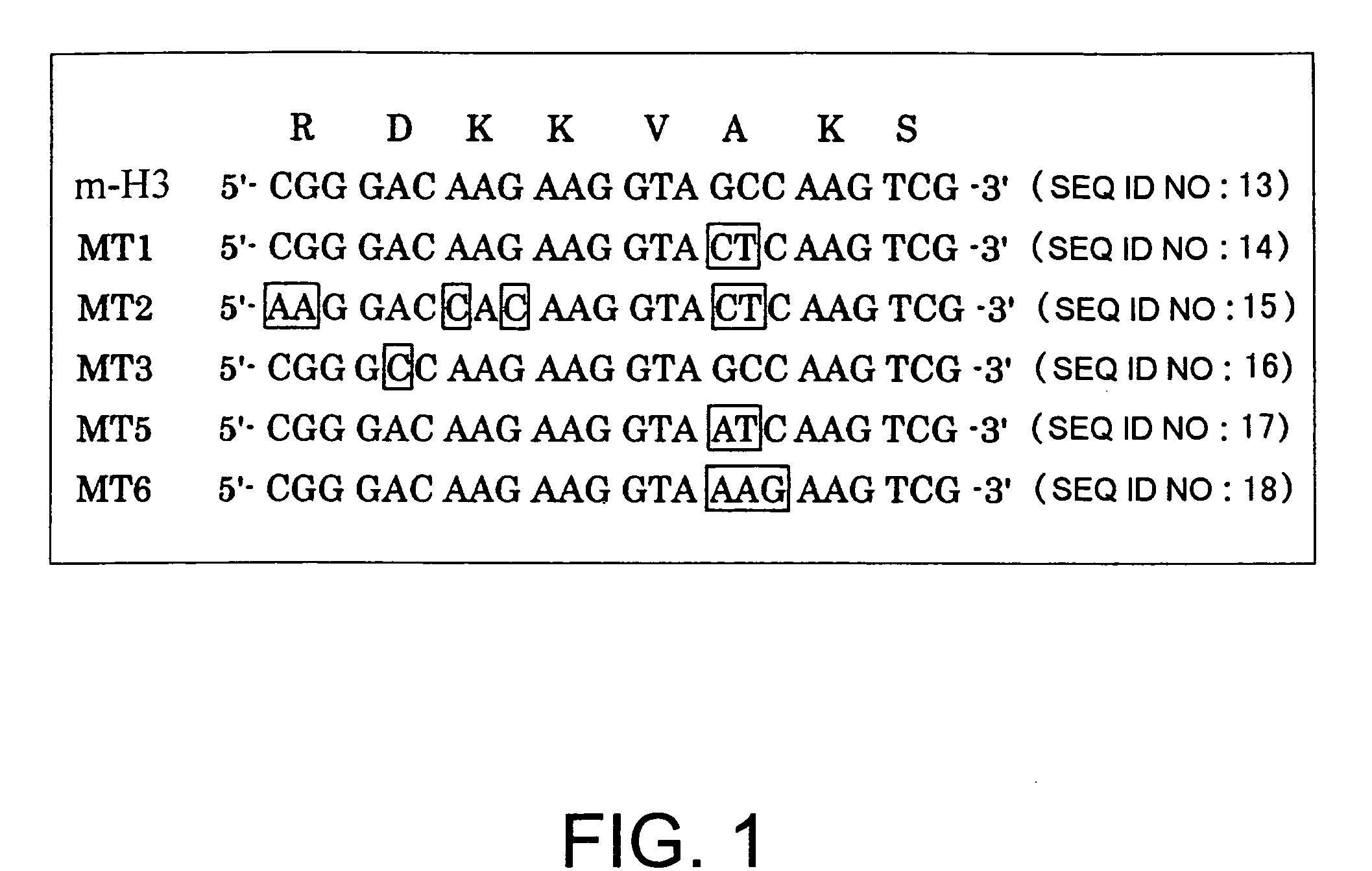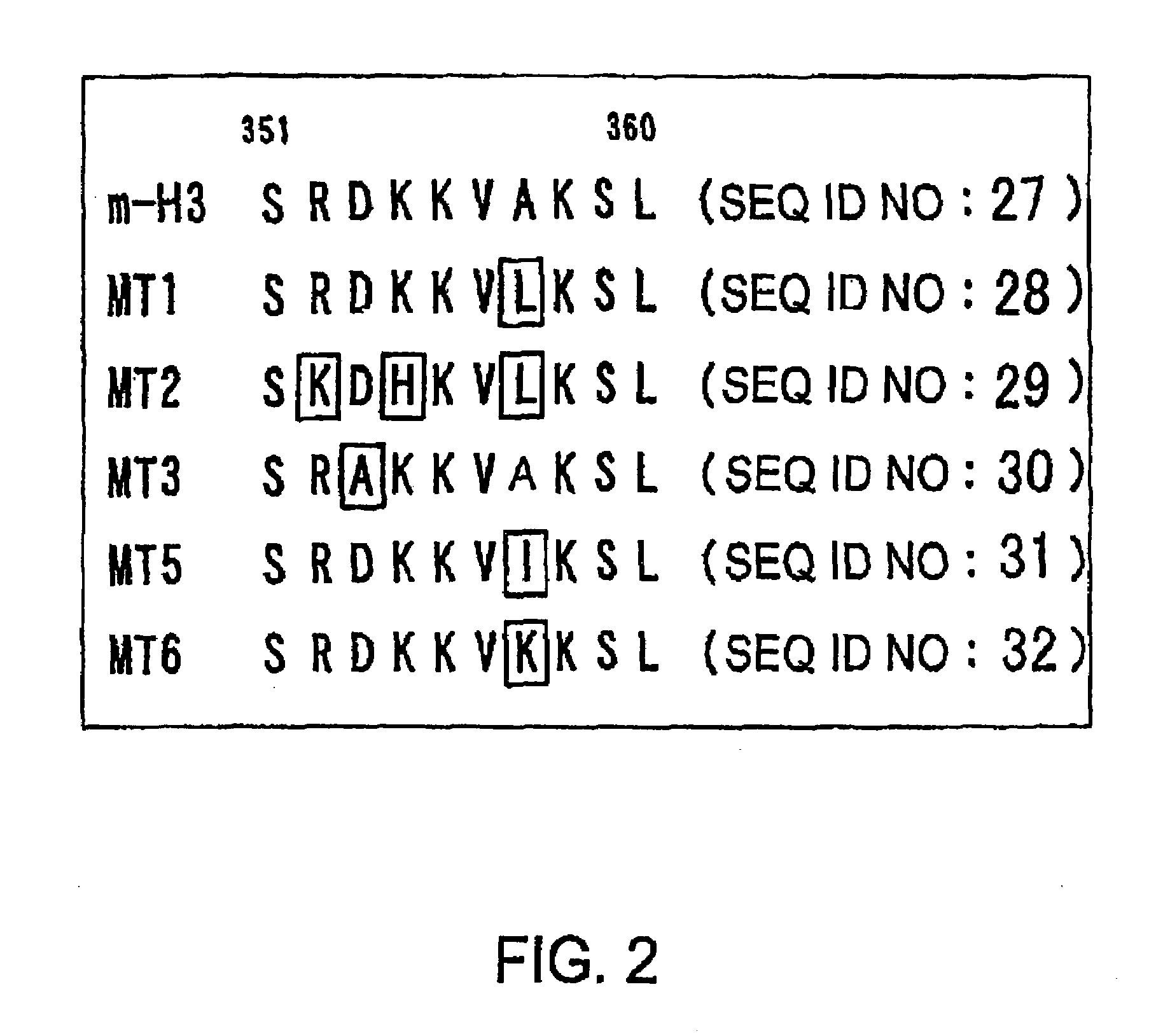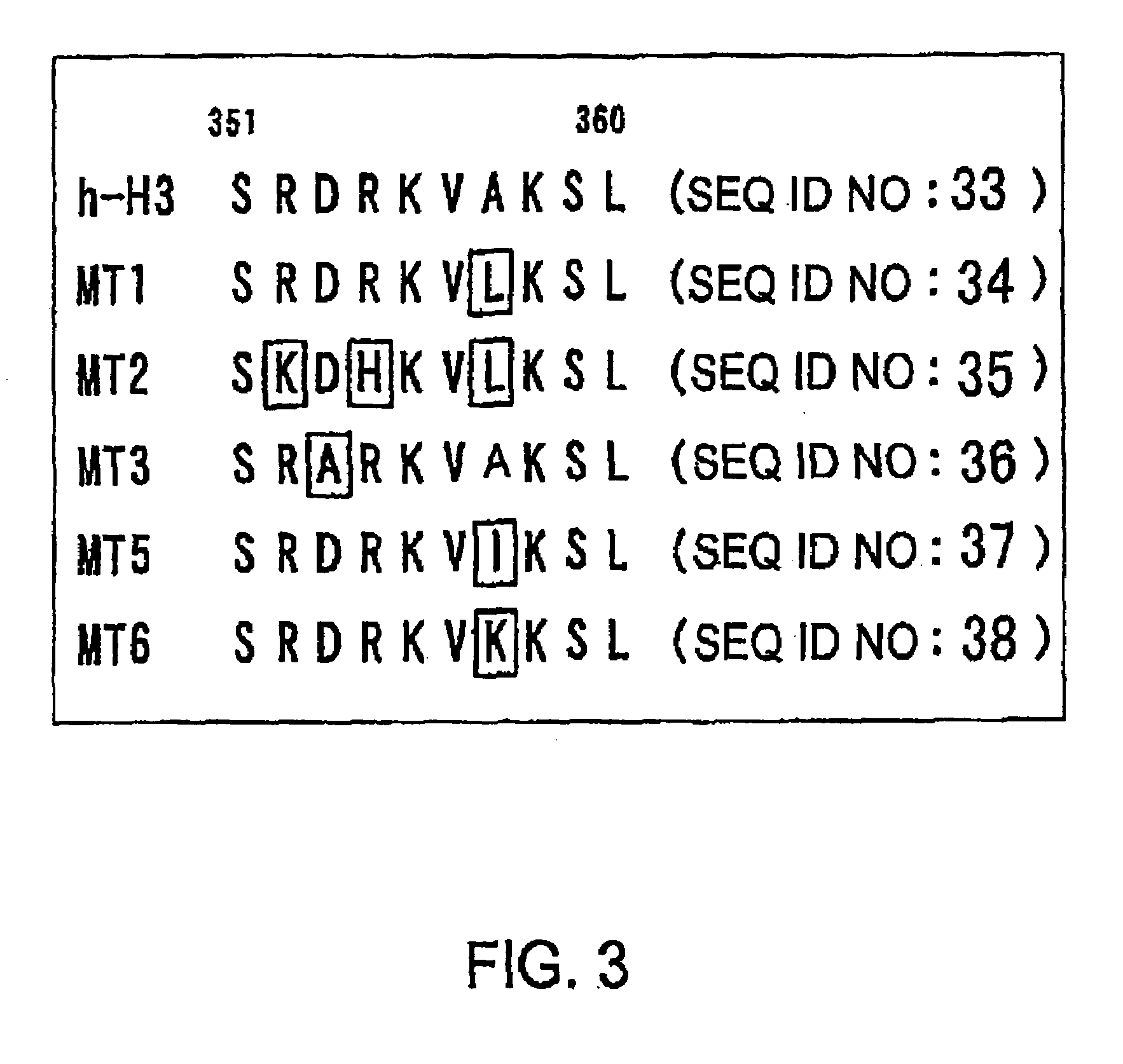Constitutively active histamine H3 receptor mutants and uses thereof
a histamine h3 receptor and constitutively active technology, applied in the field of constitutively active histamine h3 receptor mutants, can solve the problem of no reports of constitutively active h3 receptor mutants
- Summary
- Abstract
- Description
- Claims
- Application Information
AI Technical Summary
Benefits of technology
Problems solved by technology
Method used
Image
Examples
example 1
[0074]The internal domain 3 of seven transmembrane type G protein-coupled receptors is important for G protein binding or receptor activity, and is well conserved. In H3 receptors, a type of G protein-coupled receptor, this region is also conserved in the same way. An attempt was therefore made to produce constitutively active mouse H3 receptor mutants, and constitutively active human H3 receptor mutants by using PCR to introduce point mutations into a sequence that encodes this region in mouse H3 receptor cDNA and human H3 receptor cDNA.
[0075]More specifically, the amino acid mutants were first designed (FIG. 1). Next, PCR was carried out using mouse H3 receptor cDNA (expression vector: pcDNA3.1(+)) as a template, and using primers 722F (5′-AGA ACC CCC ACC TGA TGC-3′ (SEQ ID NO: 19)) and 1338R (5′-TCA CTT CCA GCA CTG CTC CAG G-3′ (SEQ ID NO: 20)), along with 683F (5′-GCA CTC GTC TTC GGC TGG ATG-3′ (SEQ ID NO: 21)) and MT1 (5′-CGA CTT GAG TAC CTT CTT GTC-3′ (SEQ ID NO: 22)), MT2 (5′...
example 2
[0079]Since H3 receptors are Gi-binding-type G protein-coupled receptors, cAMP levels were measured using ELISA. More specifically, 105 cells per well were cultured in a 24-well plate the day before testing. On the day of the test, cells were cultured for 15 minutes in the absence of serum, and then treated for 15 minutes with 0.5 mM IBMX. Forskolin (10 μM), histamine (10−11 M to 10−6 M) and thioperamide (10−10 M to 10−5 M) were respectively added, and the cells were treated for 15 minutes. The cAMP Enzyme Immunoassay (EIA) System (Amersham) was used to measure cAMP. The cells were lysed with 150 μl of lysing reagent 1B, provided with the kit. 5 μl of the cell lysate and rabbit anti-cAMP antibody were reacted by being allowed to stand undisturbed at 4° C. for two hours on an antibody-immobilized plate. Moreover, enzyme-labeled antibody was added and reacted by being allowed to stand undisturbed at 4° C. for one hour. The plate was washed with buffer, and enzyme substrate solution wa...
example 3
[0080]In the presence of 10 μM forskolin, the H3 inverse agonist, thioperamide was found to increase cAMP levels dose-dependently, particularly for the MT6 clone (FIG. 5). Although H3 receptors are constitutively active even in their natural states, and are reported to easily adopt constitutively active conformations, the M6 clone was observed to show a cAMP increase of about five-fold compared to the wild type, thus suggesting an extremely strong constitutively active state. In addition, to determine whether the increase in cAMP level caused by thioperamide was mediated by the Gi protein pathway, a similar experiment was conducted by treating the cells with pertussis toxin (PTX) at a final concentration of 100 ng / ml for 18 hours. The results showed that PTX inhibited the increases in cAMP caused by thioperamide were in both the wild type H3 and MT6 clones.
[0081]H3 receptors are present in the anterior portion of synapses, and regulate histamine release by functioning as autorecepto...
PUM
| Property | Measurement | Unit |
|---|---|---|
| temperature | aaaaa | aaaaa |
| concentration | aaaaa | aaaaa |
| concentration | aaaaa | aaaaa |
Abstract
Description
Claims
Application Information
 Login to View More
Login to View More - R&D
- Intellectual Property
- Life Sciences
- Materials
- Tech Scout
- Unparalleled Data Quality
- Higher Quality Content
- 60% Fewer Hallucinations
Browse by: Latest US Patents, China's latest patents, Technical Efficacy Thesaurus, Application Domain, Technology Topic, Popular Technical Reports.
© 2025 PatSnap. All rights reserved.Legal|Privacy policy|Modern Slavery Act Transparency Statement|Sitemap|About US| Contact US: help@patsnap.com



